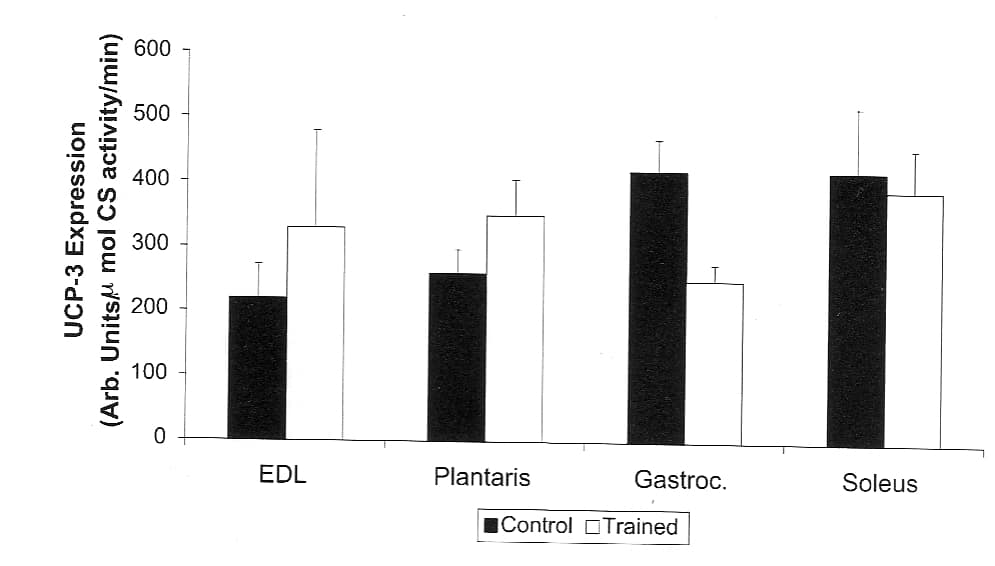Uncoupling protein-3 (UCP-3), a member of the mitochondrial uncoupling protein family, is preferentially expressed in skeletal muscle (Boss et al. 1997). It has been shown in mice that brief training periods of low-intensity exercise (2 h day -1 for 2 weeks) increase UCP-3 mRNA expression 3 h post-exercise, which returns to resting levels 24 h post-exercise (Tsuboyama-Kasaoka et al. 1998). However, it is unclear whether this translates into a change in absolute UCP-3 protein expression following endurance training. Therefore, the aim of this study was to investigate the effects of endurance swimming training on absolute UCP-3 protein expression in mouse skeletal muscle.
Thirteen mail CD1 mice (3 weeks; 11 ± 1 g) were used in this study. Animals were assigned to a control (n = 8) or training group (n = 5). Control animals performed no exercise, while trained animals performed bouts of weighted (up to 3% body mass) endurance swimming for up to 2 h duration, 5 days week -1, for 17 weeks. Swimming was performed in a glass tank filled with water maintained to a constant temperature (35 ± 1 oC). Animals were humanely killed by CO 2 exposure 24 h after the final training session. The hindlimb muscles soleus, EDL, plantaris and gastrocnemius were dissected out whole, and placed in muscle isolation medium comprising (mM): sucrose 100, EDTA 9, EGTA 1, trizma base 100 and KCl 46; pH 7.5. Muscle homogenates were prepared and analysed using Western blot analysis for total UCP-3 protein content and corrected for mitochondrial density.
Figure 1. UCP-3 expression per mitochondrion (mean ± S.E.M.)
These data show that specific (per mitochondrion measured by citrate synthase (CS)) UCP-3 protein expression is unchanged in mouse skeletal muscle following 17 weeks endurance swimming training (Fig. 1; two-way ANOVA). These findings suggest that UCP-3 protein expression is altered by similar levels to mitochondrial content in skeletal muscle following endurance training.
Boss O et al. (1997). FEBS Lett 408, 39-452
Tsuboyama-Kasaoka N et al. (1998). Biochem Biophys Res Comm 247, 498-503.
Animals were cared for in accordance with the guidelines set out by the Department of Health and Children based on the Cruelty to Animals Act, and the European Community Directive, 86/609/EC. This work was supported by the Higher Education Authority.

